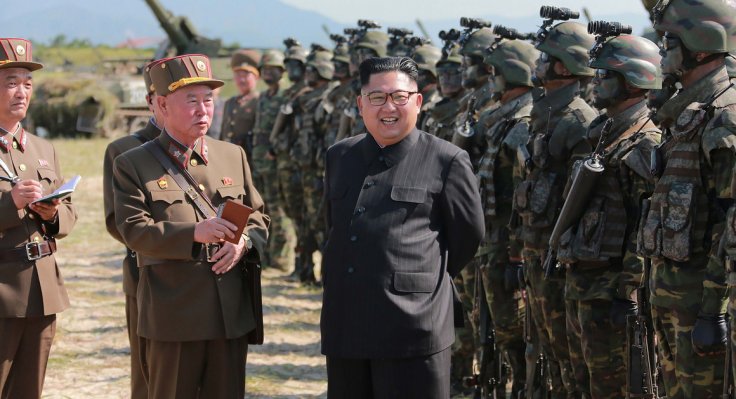If Kim Jong Un is really dead, then it is not the death of the Supreme Leader but an unstable North Korea that should worry the world.
Since Saturday, there has been a widespread concern that North Korean leader Kim Jong Un may have died.
Though there has been no report from the North Korea state-media, the presence of a Chinese team including doctors, has raised speculations of a change in North Korean leadership.
[Also Read: KCNA report celebrates Supreme Leader amid Kim Jong Un death rumors]

A collapse in the North Korean leadership increases the risk of misuse of weapons of mass destruction (WMD). The most perilous development in the event of collapse inside North Korea would be the movement of nuclear weapons out of the hermit kingdom and them ending up with rogue states or even terror groups.
[Also Read: Doctors from China are at secret Hyang San Hospital? Where 'vegetative' Kim Jong Un underwent heart surgery]
Global security experts have long been concerned about the extensive size and complexity of North Korea's nuclear, chemical, and biological (NBC) weapons programs.
And that makes it practically impossible for any world body including an alliance of countries say the United States and South Korea to ever have a 100 percent record of the complete arsenal of North Korea.
North Korea's weapons of mass destruction
Despite being a poor nation, North Korea spends a considerable portion of the country's GDP on its defense. Weapons testing has been one of the most prolific activities that Kim Jong Un engaged in, so say the least.
North Korea has an arsenal of missiles that include short-, medium-, intermediate-, and intercontinental- range, and submarine-launched ballistic missiles.
Though there is no clear inventory on North Korea's nuclear stockpile, Pyongyang experts roughly put the number between 10 to 30. US spy agencies, however, estimate that North Korea as 30 to 60 nuclear weapons.
Intelligence reports also have confirmed that North Korea is capable of producing weapons-grade uranium or plutonium, the primary elements required for making fissile material—the core component of nuclear weapons.

North Korea nuclear missiles could reach US
North Korea tested its intercontinental ballistic missiles (ICBM) system capable of carrying a large nuclear warhead in 2017.
The new Hwasong-15 ICBM during its testing phase in November 2017 is claimed to have hit an altitude of 2,780 miles (4,475 Kms), far above the International Space Station, and flew about 590 miles (1,000 Kms) before landing in the sea off Japan's coast.
Defense analysts believe that the North Korean ICBM Hwasong-15 has a potential range of 8,100 miles (13,000 Kms) and, if fired on a flatter trajectory, is capable of decimating any part of the US mainland.








